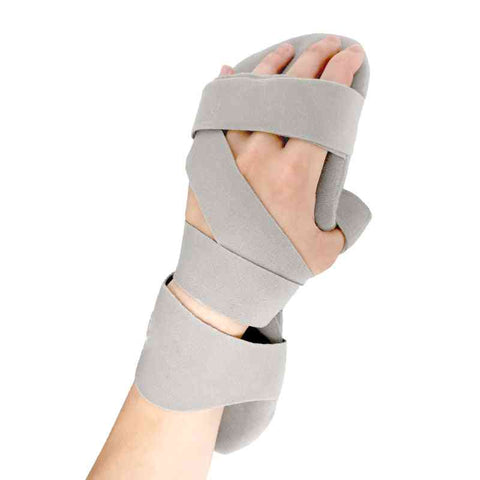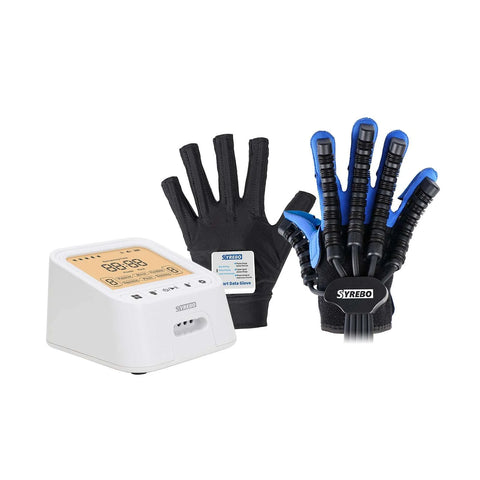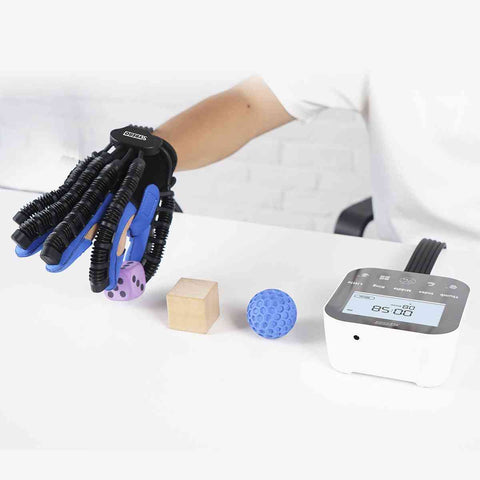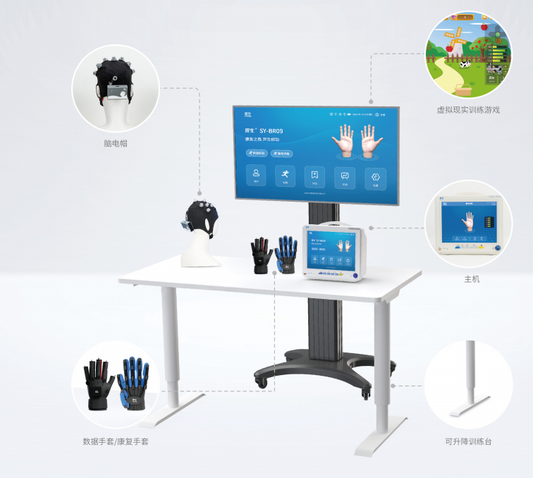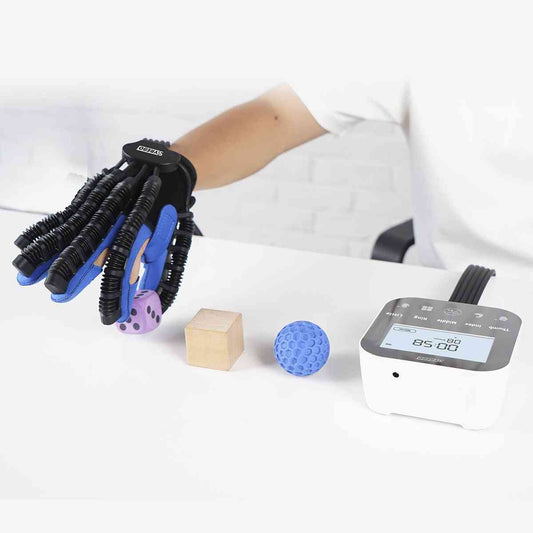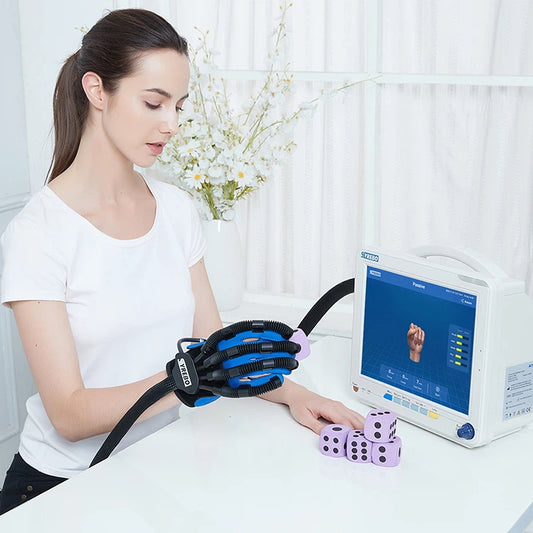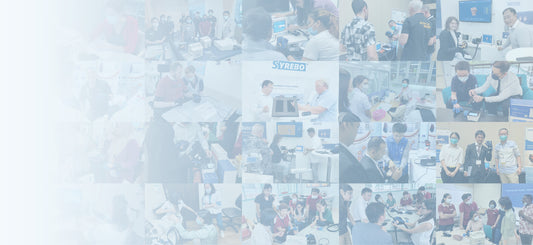Gloves for Stroke Patients: Which Type Is Best for You?
Gloves for Stroke Patients
Stroke is one of the top three causes of death in the United States, but nothing causes more long-term disability than stroke. After a stroke victim comes back from the dead, there is an increased risk of having another stroke and the resulting likelihood of severe disability. However, medical and technological advances, such as rehabilitation gloves and hand splints, have made it easier to help patients cope and recover. Occupational therapy is an effective way to restore mobility and reduce future risks for stroke victims. Click to learn about stroke causes.
Treatment for stroke survivors often involves "retraining" or reprogramming the brain after neurological damage. As we learn more about the relationship between the brain, muscles, and connective tissue, stimulating innovation is becoming a top tool for rehabilitation. Today, many patients rely on stroke rehabilitation gloves and dynamic splints to reverse injuries, regain mobility, and reduce post-stroke pain.
If your hands have been affected by a stroke, there are a number of stroke-patient-specific gloves that can help. But how do you know what to look for and which gloves are best for you? To help you find the best gloves for you, this article will discuss 4 different types of rehabilitation gloves for stroke patients. We'll also explain how hand rehabilitation works so you can understand how gloves can help you achieve your rehabilitation goals.
Why Do You Need Rehab Gloves to Recover After a Stroke?
Strokes occur when the blood supply to the brain is interrupted, resulting in damage to areas of the brain that are deprived of oxygen. When a stroke affects the area of the brain responsible for movement, such as a stroke in the motor cortex, it disrupts the brain's ability to send signals to get muscles to move.
As a result, many stroke survivors experience muscle weakness after a stroke. While muscle weakness can occur throughout the body, about 70% of stroke survivors experience muscle weakness in the upper extremities and/or hands.
Survivors are encouraged to participate in regular therapy to help improve movement after a stroke. If treatment is neglected, conditions such as spasticity (tightness in the affected muscles) can develop into serious complications such as contractures (stiff, tight, often painful joints).
In fact, if hand spasms are left untreated, contractures can eventually lead to the hand being clenched into a fist and the fingers being rolled into the palm of the hand. Not only does this limit the ability to use the hand, but it can be quite painful. Gloves for stroke victims can help prevent this complication.
When a stroke affects the brain's ability to send hand movement signals, the brain can bypass the damaged area by rewiring it. This process is called neuroplasticity, and it allows the brain to create and strengthen new neural pathways.
Neuroplasticity is activated by repetition or extensive practice. When you repeat a task consistently, the brain picks up on that stimulus and responds by strengthening the neural pathways responsible for that task.
For this reason, lots of repetitions of therapeutic hand exercises are one of the best ways to improve hand function after a stroke. This helps to stimulate the brain, promote neuroplasticity, and enhance the function of the affected hand over time.
Types of Gloves for Stroke Patients
Hand exercise can be difficult when your hand is paralyzed, severely weakened or swollen, or tightened with spasticity after a stroke. This is where gloves for stroke patients can help. Here is a rundown of the four main types of gloves for stroke patients:
Dynamic Hand Splints
When stroke survivors lose function in their upper limbs after a stroke, sometimes hard static splints are used to keep the arm and wrist in a "neutral" position and avoid muscle contracture. Unfortunately, some studies have shown that static splinting is ineffective against muscle contracture, and others have actually linked the practice to joint damage and contracture. Contracture is a loss of motion over time due to abnormal shortening of the soft tissue structures spanning one or more joints. These include skin, ligaments, tendon, muscles, and joint capsules.
The Ideal splint is dynamic, moveable, and helps stretch out muscles, tendons, and ligaments, like the Syrebo Hand Splint. The splint's energy-storing technology allows individuals suffering from spasticity to stretch comfortably and safely, resulting in increased motivation and compliance. It allows the fingers to move through flexion caused by associated reactions and increased tone.
Dynamic splinting can prevent contractures after a stroke and also
- Reduce joint pain.
- Protect joints.
- Prevent edema (excess fluid buildup in muscle tissue).
- Allows the fingers to move through flexion caused by the increased response and tension associated with postural changes.
- Allow the fingers to gradually return to extension.
All efforts to regain strength and function are invaluable in the rehabilitation of stroke patients. Using a dynamic splint for stroke rehabilitation is a proven way to reduce pain and complications while the survivor focuses on recovery. It can also restore function to the patient's arm, opening up new possibilities for them.
Edema Gloves
Arms and/or hands sometimes swell after a stroke, usually due to a lack of exercise. An edema glove is a tight-fitting glove that fits over the hand to reduce and prevent swelling. Edema gloves can cover only part of the fingers and wrist, or they can completely cover the hand, fingers, and half of the forearm.
While these gloves also don't directly reduce spasms or increase hand movement, they can help redirect excess fluid buildup and allow the hand to move more freely.
Assistive Gloves
There are several types of assistive gloves, including dynamic braces and robotic assistive gloves. Dynamic braces place the fingers in a stretched position, but unlike static braces, dynamic braces have a degree of dexterity that allows the fingers to bend when needed.
Conversely, assistive robotic gloves utilize technology to power the movement of the fingers. Both of these assistive gloves promote hand movement, allowing you to use your hands more easily in everyday life. Not only does this help to protect your joints from contractures, but it also encourages small movements that can provide some stimulation to the brain.
However, the use of assistive gloves alone does not challenge the brain enough to activate neuroplasticity in the same way that therapeutic hand exercises do. Therefore, the gloves that are most effective in restoring function for stroke patients are also the most physically challenging types of gloves:
Stroke Rehabilitation Glove
Keeping your muscles active after a stroke is important to prevent muscle tissue from stiffening and shortening. Activity also helps keep the pathways between the brain and muscles open. Stroke rehabilitation gloves that promote sensory-motor stimulation can be very useful for stroke survivors for a number of reasons, from preventing complications to making life-changing therapies possible.
Therapy is an important part of the rehabilitation process after a stroke, and occupational therapy often incorporates basic elements such as towels or small objects that allow patients to learn to grasp, release, hold, and perform other basic tasks. Stroke rehabilitation gloves like the SYREBO Rehabilitation Glove, a functional stroke rehabilitation glove that incorporates a tension system to help patients stretch their fingers and thumbs after grasping, can help with these activities. This beneficial stimulation contributes to the neuroplastic changes needed in the brain to help reprogram it.
Treatment outcomes of the Stroke Rehabilitation Glove include:
- Reduced twitching of the wrist, shoulder, and elbow joints while performing "reaching and grasping" therapy tasks
- Improved flexion, extension, and abduction
- Support for hand and finger extension after loss of mobility
- Improved motor recovery
- Enhanced grip strength
- Positive improvement in the overall function of the patient's hand, with some patients experiencing almost complete recovery of hand function
- There is great potential for future improvements in arm and wrist mobility.
Which Stroke Rehab Gloves Help Relieve Spasticity?
Before we wrap things up, it's important to emphasize that not all stroke rehab gloves help relieve spasticity. While splints and assistive gloves help stretch the affected hand, they do not directly address spasticity. Spasticity occurs when the brain fails to send the correct signals to the affected hand. As a result, the hand muscles contract in an attempt to protect themselves.
Stretching a hand that is tight from spasticity is a good way to prevent contractures, but it doesn't solve the problem of the brain being disconnected from the muscles. The only way to get to the root of the spasticity problem is to rewire the brain through extensive hand therapy exercises.
If you wish to restore as much hand function as possible, you can use different stroke recovery gloves for different goals. For example, you can use the assistive glove to get a good stretch out of your hand at specific times of the day.
Then, you can also set aside a half hour to sit down and practice therapeutic hand exercises to activate neuroplasticity and get to the root of hand weakness after a stroke.
Choosing the Best Gloves for Stroke Patients at SYREBO
Whether you are a caregiver, occupational therapist, or stroke survivor, SYREBO has life-changing products for stroke survivors. We pride ourselves on providing cutting-edge solutions that are affordable and accessible to people with limited mobility and impaired function. We have a wide range of products that can aid in the recovery and rehabilitation process for stroke survivors. Check out all of our stroke rehabilitation products. Or contact us to help you find the right product for you.



